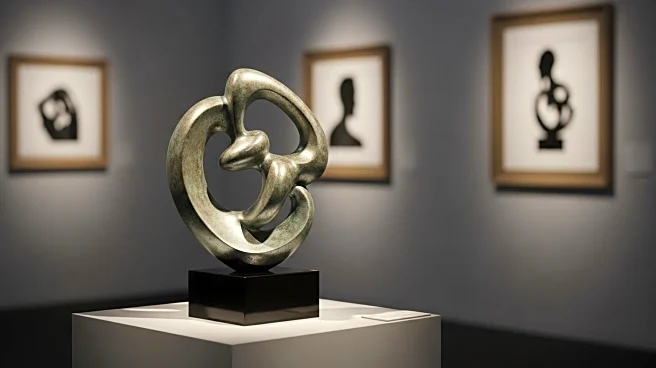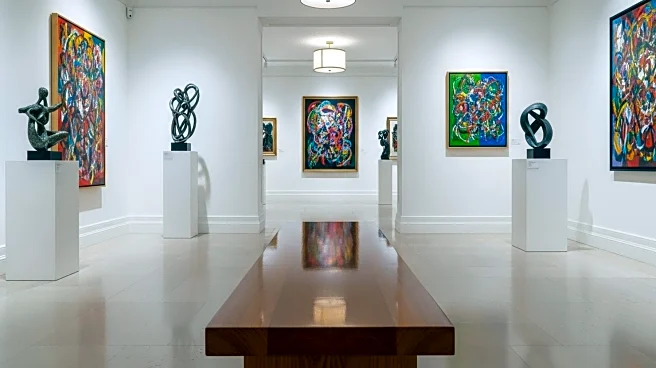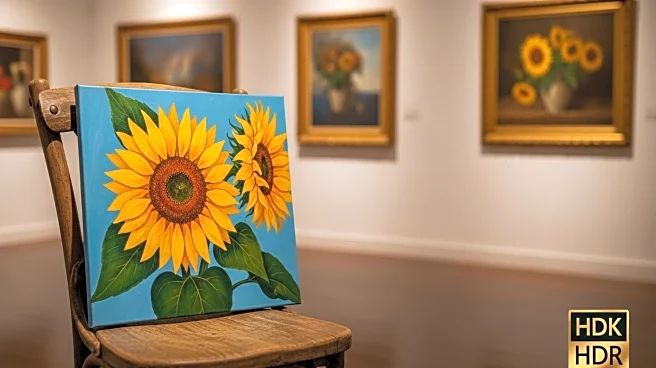What's Happening?
Charlotte Mullins, an author and critic, has released a new book titled 'The Art Isles: A 15,000-Year Story of Art in Britain and Ireland.' The book offers a comprehensive survey of art from the British Isles, spanning from the Ice Age to the present day. Mullins aims to reconfigure the traditional canon of art by including a diverse range of artists and styles, emphasizing the dynamic and interconnected nature of art in the region. The book challenges the conventional notion of a 'British School' by highlighting the influence of foreign artists who migrated to the British Isles, bringing new styles and ideas that were integrated into local art. Mullins also addresses historical events that have shaped the art landscape, such as the Viking raids, Henry VIII's Reformation, and Brexit.
Why It's Important?
Mullins' work is significant as it seeks to broaden the understanding of art history in the British Isles by including diverse voices and perspectives. By challenging the traditional narrative, the book highlights the importance of migration and cultural exchange in shaping art. This approach not only enriches the historical context but also reflects contemporary discussions about identity and globalization. The inclusion of female artists and international influences offers a more inclusive and comprehensive view of art history, which can inspire new scholarship and appreciation for underrepresented artists. The book's release comes at a time when cultural institutions are increasingly recognizing the need to diversify their collections and narratives.
What's Next?
The release of 'The Art Isles' may prompt further academic and public interest in re-evaluating art history from a more inclusive perspective. Art institutions and educators might incorporate Mullins' findings into their programs, potentially leading to exhibitions and discussions that explore the themes of migration and cultural exchange in art. Additionally, the book could inspire other authors and researchers to explore similar themes in different regions, contributing to a broader movement towards a more inclusive and interconnected understanding of art history.
Beyond the Headlines
Mullins' book also touches on the ethical and cultural implications of how art history is told. By rethinking the narrative away from a singular national story, the book encourages readers to consider the complexities of identity and belonging in art. This perspective aligns with ongoing debates about the role of art in society and the responsibility of cultural institutions to represent diverse histories. The book's emphasis on connectivity rather than remoteness challenges isolationist narratives and highlights the positive impact of cultural exchange.










